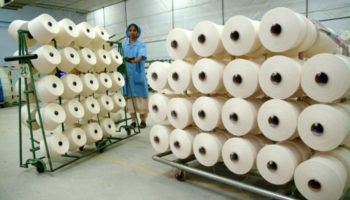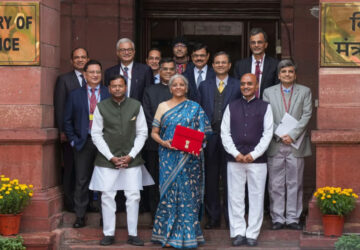 Operating margin of Indian cotton yarn spinners is expected to shrink by 200-400 basis points (bps) on-year in fiscal 2020 owing to a narrowed spread between cotton and yarn prices as compared to last fiscal, according to CRISIL. The decline would be more than what was estimated by CRISIL in May, with small players bearing the brunt, the company has said.
Operating margin of Indian cotton yarn spinners is expected to shrink by 200-400 basis points (bps) on-year in fiscal 2020 owing to a narrowed spread between cotton and yarn prices as compared to last fiscal, according to CRISIL. The decline would be more than what was estimated by CRISIL in May, with small players bearing the brunt, the company has said.
Higher domestic cotton prices compared with international prices during April-October 2019, a sharp fall in exports mainly to China and Pakistan, and the resultant domestic oversupply would lead to the squeeze, CRISIL said in a report.
An analysis of 79 cotton spinners rated by CRISIL suggests that mid- and small-sized spinners (having spindles less than 20,000) are likely to be impacted the most, as shrinking revenue and lower margin will impact cash generation. Also, their balance sheets are not as strong as some of the large players, which will impact credit metrics.
The spread fell from `86 per kg in April to below `75 by October, resulting in a sharp fall in operating profitability for spinners. But with the arrival of new crop, the spread has started recovering from November onwards. However, sustainability of spread above `80-85 per kg for the rest of fiscal is critical for spinners to negate the fall in margin till October 2019.
Gautam Shahi, Director, CRISIL Ratings, said, “While domestic demand (70 per cent of domestic production) is expected to grow 3-4 per cent this fiscal, supply has been higher because of lower exports. The United States-China trade war has impacted demand for yarn in China, while the Indian Government has banned yarn exports to Pakistan. China and Pakistan (accounting for 35 per cent and 5 per cent of yarn exports, respectively, in fiscal 2019) have reduced imports from India by 50-60 per cent this fiscal. As a result, exports in the first seven months of fiscal 2020 are lower by around 38 per cent leading to higher domestic inventories and pressure on spreads.”
The dynamics of the spread between international and domestic prices of cotton also affects profitability. International cotton prices declined by around 15 per cent between April and October 2019, following a bumper crop in Brazil and the United States, and destocking by global consumers, mainly China. On the other hand, domestic prices fell only 10 per cent during this period because of an increase in minimum support price (MSP), which rendered India’s cotton yarn exports uncompetitive.
Cotton output is expected to improve with late recovery in monsoon and increase in sowing area to 127.7 lakh hectare (6 per cent higher on-year and 8 per cent more than the five-year average). That would put pressure on domestic cotton prices, which could slip below the MSP sans policy intervention. On the other hand, international cotton prices are expected to remain range-bound until tariff issues between the United States and China get resolved.
Large spinners will fare better owing to superior customer profiles, diverse product mix, and ability to manufacture a wide range of yarn counts. CRISIL expects mid- and small-sized players with limited balance sheet strength to face headwinds, until demand firms up and the recent improvement in spreads sustains.


















